Herzog & de Meuron is a Swiss architecture firm led by Jacques Herzog and Pierre de Meuron. Winner of the 2001 Pritzker Award, the company was founded in 1978, with its head office in Basel, Switzerland.

Image source: https://search.creativecommons.org/photos/8bfbdb68-be0a-4acd-8908-e56cbab81e95 by 準建築人手札網站 Forgemind ArchiMedia
Founders Partners: Jacques Herzog and Pierre de Meuron
The careers of founders and senior partners Jacques Herzog and Pierre de Meuron closely paralleled one another, with both attending the Swiss Federal Institute of Technology (ETH) in Zurich.
Jacques Herzog was born on 19 April 1950 and studied architecture at the Swiss Federal Institute of Technology Zurich (ETHZ) from 1970 to 1975. Together with Pierre de Meuron, he established Herzog & de Meuron in Basel in 1978. He has been visiting professor at Harvard University, USA since 1989, and was professor at ETH Zürich and co-founder of ETH Studio Basel – Contemporary City Institute, from 1999 until 2018.

Image source:https://search.creativecommons.org/photos/ac400748-1674-4b27-a475-8ffbe21dcddb
Pierre de Meuron was born on 8 May 1950 and studied architecture at the Swiss Federal Institute of Technology Zurich (ETHZ) during the same years of Herzog. Together with Jacques, he established Herzog & de Meuron in Basel in 1978. He has been visiting professor at Harvard University, USA since 1989, and was professor at ETH Zürich and co-founder of ETH Studio Basel – Contemporary City Institute, from 1999 until 2018. In 2015, Pierre de Meuron and Jacques Herzog also co-founded the charitable foundation “Jacques Herzog und Pierre de Meuron Kabinett, Basel”.
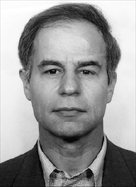
Herzog & de Meuron: a Firm Across Continents
Jaques and Pierre’s firm, Herzog & de Meuron is composed by an international team of five partners, about 40 Associates and 400 collaborators who work on projects across Europe, the Americas, and Asia.
Herzog & de Meuron have designed a wide range of projects from the small scale of a private home to the large scale of urban design. While many projects are highly recognized public facilities, such as stadiums and museums, they have also completed several distinguished private projects including apartment buildings, offices, and factories.
In 2001, Herzog & de Meuron were awarded the Pritzker Prize, the highest of honors in amongst architecture awards.
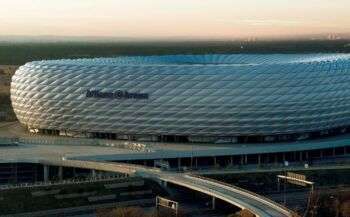
Image source: https://search.creativecommons.org/photos/75a3440e-3e91-4d9b-a562-998499bb99d5 by Trodel
Style and Influences of an International Company
HdM’s early works were reductivist pieces of modernity that registered on the same level as the minimalist art of Donald Judd. However, their recent work at Prada Tokyo, the Barcelona Forum Building and the Beijing National Stadium for the 2008 Olympic Games, suggest a changing attitude. The shapes and forms of some of the works suggest art glass and objects d’art that one would see on a coffee table, like an Art Déco ashtray or quirky container for chocolates. Thanks to computer engineering, a building becomes a blown-up version of a desk in the Herzog & de Meuron imaginary.
HdM’s commitment of articulation through materiality is a common thread through all their projects. Their formal gestures have generally progressed from the purist simplicity of rectangular forms to more complex and dynamic geometries. The architects often cite Joseph Beuys as an enduring artistic inspiration and collaborate with different artists on each architectural project. Their success can be attributed to their skills in revealing unfamiliar or unknown relationships by utilizing innovative materials.
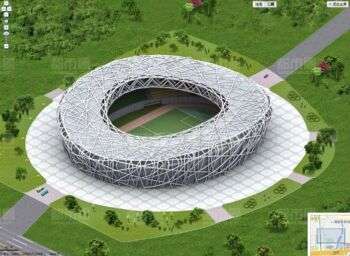
Image source:https://search.creativecommons.org/photos/501033ee-e59e-4113-a5c0-f7c6e4d80ead by trecca
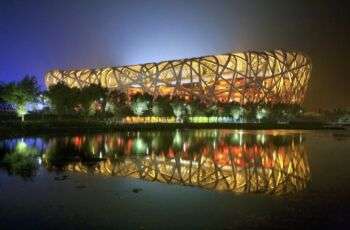
Image source: https://search.creativecommons.org/photos/438dbb03-95a2-4a2d-80ee-b614379abf3d
A Selection of Works by Herzog & de Meuron
Herzog & de Meuron received international attention very early with the Blue House in Oberwil, Switzerland (1980) and the Stone House in Tavole, Italy (1988). The firm’s breakthrough project was the Ricola Storage Building in Laufen, Switzerland (1987) while their most recognized buildings include Prada Aoyama in Tokyo, Japan (2003); Allianz Arena in Munich, Germany (2005); the National Stadium Beijing, the Main Stadium for the 2008 Olympic Games in Beijing, China; and Vitra Haus in Weil am Rhein, Germany (2010). Further projects include the New Hall for Messe Basel, Switzerland (2013) and Miu Miu Aoyama, across the road from Prada Aoyama in Tokyo, Japan (2015).
They are perhaps best known for their conversion of the giant Bankside Power Station in London to the new home of Tate Modern.
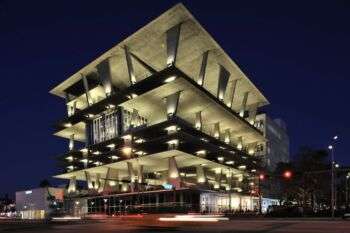
Image source: https://search.creativecommons.org/photos/ffa1e8e2-b834-4cd9-b226-ade1ade3f146 by 準建築人手札網站 Forgemind ArchiMedia
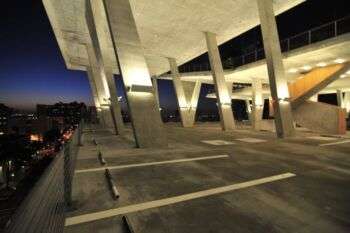
Image source:https://search.creativecommons.org/photos/142f26e7-1c68-4814-bcc9-546d1351a982
Recognition and Architectural Awards
Jacques Herzog and Pierre de Meuron have been awarded numerous prizes including the Pritzker Architecture Prize (USA) in 2001, the RIBA Royal Gold Medal (UK) and the Praemium Imperiale (Japan), both in 2007. In 2014, Herzog & de Meuron were awarded the Mies Crown Hall Americas Prize (MCHAP) for 1111 Lincoln Road, Miami Beach. Jacques Herzog and Pierre de Meuron were awarded the title of doctor honoris causa in 2018 by the Technical University of Munich.
Info sources:
https://www.herzogdemeuron.com/index/practice/profile.html
https://www.herzogdemeuron.com/index/practice/people.html
https://en.wikipedia.org/wiki/Herzog_%26_de_Meuron
